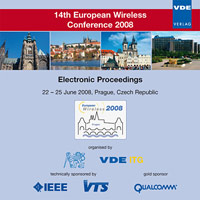Game Theoretic Analysis of a Cooperative Communication System
Konferenz: European Wireless 2008 - 14th European Wireless Conference
22.06.2008 - 25.06.2008 in Prague, Czech Republic
Tagungsband: European Wireless 2008
Seiten: 6Sprache: EnglischTyp: PDF
Persönliche VDE-Mitglieder erhalten auf diesen Artikel 10% Rabatt
Autoren:
Marina, Ninoslav (Department of Electrical Engineering, University of Hawai‘i at Manoa, 2540 Dole Street, Honolulu)
Inhalt:
We analyze a four node wireless network in which the transmit nodes help each other acting as relays during the periods in which they do not transmit their own information. In order to help the other node, each node has to use a part of its available power. The network is modeled as a noncooperative game in which each player (node) maximizes its own utility function (information rate). The goal of the game designer (network provider) is to maximize the objective function (in this case the sum rate) in order to get better network efficiency. Here we analyze the so called price of anarchy, as the ratio between the objective function at the worst Nash equilibrium and the optimal objective function. In this scenario, the Nash equilibrium is achieved by selfish (non-cooperative) behavior between the players. In other words, in order to maximize its own utility function each node chooses a strategy to use its available power only for itself, and not helping the other node. Our results show that there is a big possibility for improvement of the sum rate at the Nash equilibrium if the players are “encouraged” to cooperate or to choose a strategy (power policy) that is not selfish. The network operator, therefore, can design a mechanism in which both players maximize their own utilities but also the sum rate at the Nash equilibrium is much closer to the optimal sum rate.


